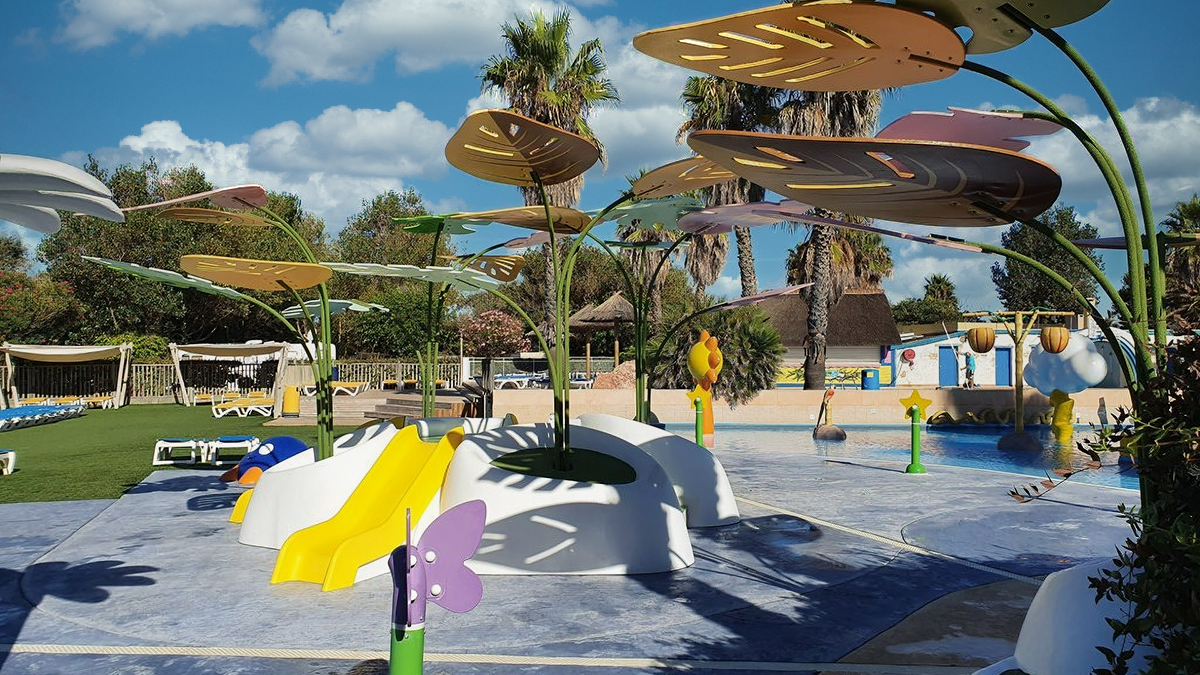In outdoor waterparks and theme parks, shading is a key determinant for the well-being and comfort of visitors and users. Furthermore, from the point of view of the owners and/or operators, shading systems allow them to spend more time in the facilities and therefore consume more.
Amusement Logic incorporates shading elements into the design of water parks and theme parks, after a detailed study of the sun’s orientation and transit, from the early stages of the project.
We distinguish between two types of shading systems: fixed shading systems, such as awnings attached to buildings or pergolas, and mobile systems, such as free-standing sunshades. Both systems have advantages: fixed systems are more durable, while mobile elements are more versatile. But there are also disadvantages: fixed systems require a higher initial investment than mobile ones. However, in many cases, it is more efficient to combine both types of shading.

In any case, it is common for Amusement Logic to design (and later produce) customised elements, specific to each particular park and in accordance with its theming. In terms of location, fixed shading systems are more suitable for relaxation areas such as sunbeds, cafeteria terraces, or waiting areas such as queues to access attractions or slides.
However, it is operationally advisable to always have sunshades that users can position according to their particular needs or preferences, or that can be moved to serve transient requirements in waiting areas, or other areas of the waterpark or theme park.
Finally, in very hot climates, it is necessary to incorporate shading on paths, especially in water parks. This prevents the pavement from heating up and, consequently, the unpleasant sensation of visitors’ feet burning. Sometimes even paving with a material that is characterised by a high solar reflection index is not enough.
By Pablo Vidal, Senior Architect in the Architecture Department of Amusement Logic






